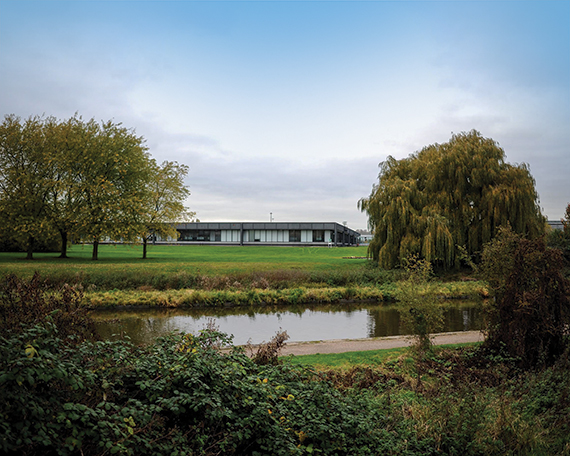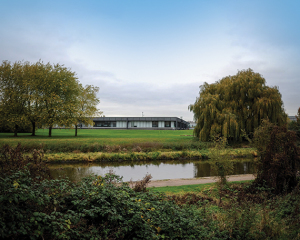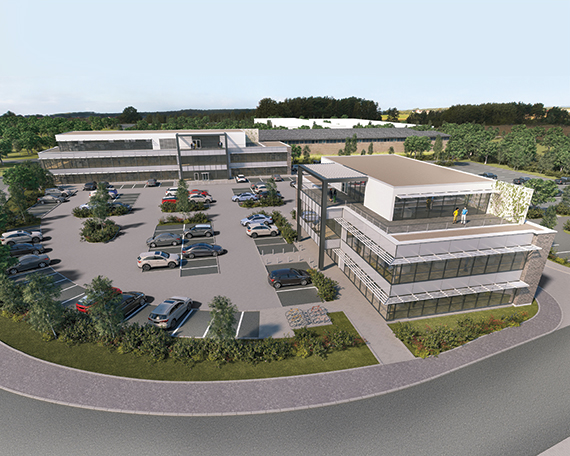Nottingham appeared at this year’s MIPIM with a distinct spring in its step. Flushed with recently-won planning consent, the city was keen to tell anyone in Cannes who cared to listen about the 279-acre Boots site at Beeston now up for grabs to a buyer with a flair for urban regeneration.
A key part of the wider Nottingham Enterprise Zone (also launched at MIPIM), the Boots site could see the development of as much as 900,000 sq ft of commercial space and 675 new homes on land four miles south-west of the city centre that until 2009 was owned by the pharmaceutical heavyweight.
The EZ hopes to tap into the established biotech hub already created there, and the office space to be built will be part of the next generation of the city’s office stock. It will continue the trend of recent years to build new offices out-of-town, even though Nottingham property professionals are detecting a shift in occupational preferences.
The lack of brand-new development in the city has frustrated office tenants for more than a decade, although the recovering UK economy has brought hope once more to one of Nottingham’s best-known potential sites. Now, it seems, determined occupiers may be taking matters into their own hands. Last autumn, US pharma giant Parexel International signed the largest office deal in Nottingham in four years – a deal that will see it move into 62,000 sq ft of city centre space at 2 Castle Wharf. Private property firm Charles Street Buildings Group has comprehensively refurbished the space.
“What is significant about this deal is that an out-of-town occupier has been lured back in by better amenities and public transport,” says JLL Nottingham’s lead director, Matt Smith. “It is a pattern that we are seeing more and more and will be a common theme in the years ahead.”
Smith points out that the average age of the staff of many companies considering a move is under 30 and these younger professionals are simply not attracted to daily commutes involving a £6 bus journey to the edge of the city.
“Nottingham’s office parks represent a substantial pool of demand [for the city centre],” adds Smith. “These companies are often paying rents equivalent to city centre buildings, whereas in competing centres, such as Birmingham, they would be getting a discount for being outside the city centre.”
So local observers predict rapid refurbishment of well-located central buildings over the next couple of years, reflecting a marked change from the recent trend to convert such buildings into student accommodation. The first batch of these potential office refurbs is already nearing completion, including: City Gate West, 37 Park Row and New Castle House. Nottingham agents forecast achieving rents of £16.50-£17.50 per sq ft on top-notch refurbished space, although Parexel grabbed its new home for only £15 per sq ft, albeit on a 15-year lease.
The differential between passing rents in tired secondhand offices and quoting rents for high-spec refurbished space is likely to be small enough to tempt more tenants to make a move, particularly as development of brand-new stock seems unlikely in the near to medium term. As one property expert who prefers not to be identified notes wryly: “For schemes that couldn’t sprout in central Nottingham in the middle of the boom there is a question mark over whether they will ever work.”
Eastside story
Nottingham’s inner-city island site is the largest plot of land in the city’s Eastside regeneration area. It has had several names during more than 20 years of attempts to make the former industrial area part of a modern cityscape.
But last month a preferred purchaser for the 35 acres of wasteland and derelict buildings was selected. Savills Nottingham’s head of commercial, Victor Ktori, who is advising on the transaction, is tight-lipped about the identity of the new owner (the city council having expressed an interest), but he is optimistic of progress.
Rumours abound that one of the few large enquiries seen in Nottingham in recent years could land at the site. Bilfinger GVA director Andrew Venables will not be drawn on who the potential occupier for 120,000 sq ft might be, but confirms that the deal is likely to be a design-and-build prelet.
Leicester
Leicester is not known for being an office destination, so has been largely bypassed by big, glitzy development proposals. That has not stopped it gunning for – and, it appears, netting – new office occupiers. Two requirements of around 30,000 sq ft, modest by the standards of other cities but hefty for Leicester, look set to land in the city centre. Although deals have yet to be confirmed, both IBM and Hastings Insurance will take space.
“Both of these requirements will bring back into use buildings that had been empty for some time,” says Helen Donnellan, head of inward investment at Leicester city council. “We are positioning Leicester in a new way and focusing on bringing professional services into the city centre.”
At the same time, developer Marlborough Property is delivering new space at Raynsway Properties’ out-of-town Watermead scheme. Two buildings totalling 34,000 sq ft should complete this summer and a second phase, including 100,000 sq ft of offices, is in prospect, though letting agent Jane Taylor, director of office agency at Lambert Smith Hampton, says this will not be built out speculatively. She adds: “There is also potential for new development around the station.”
Derby
The mantra “build and they will come” has sadly fallen flat in Derby. The city council was widely lauded for taking the brave move to pump public sector cash into Lowbridge’s Friar Gate Square. The first phase, a 32,000 sq ft office block, went up speculatively in 2013. Since then, despite frequent whispers of space being under offer to varies parties, not a single tenant has rolled into the building. Unsurprisingly, bullish talk of a second-phase, 42,000 sq ft sister block has quickly petered out.
Nick Hosking, director at Innes England and letting agent on the scheme, insists that a taker will soon be found: “It will be a massive deal for the city centre when that goes through.” But the shine may be taken off the transaction if turns out that the tenant is, as rumoured, Derby University, rather than a private sector business.
Russell Rigby of Rigby & Co points out that city centre office stock has been eroded by permitted development rights: “There is a shift to residential taking place and up to 200,000 sq ft has been taken out of the market by housing or student accommodation.”
The woes of the city centre contrast with the out-of-town market and Derby’s runaway success, Pride Park. The site is now largely developed, and St Modwen is hoping to win planning consent for an extension site, now branded Derby Triangle, which will include 320,000 sq ft. However, senior development surveyor Peter Rudd does not expect work to start on the office element until well into 2016.
Steve Salloway of Salloway Property Consultants is hopeful of increased demand. “We have recently had people scoping Derby with a view to growing,” he says. “ We are more likely to find larger requirements (around 30,000 sq ft) now we are coming out of recession.”













